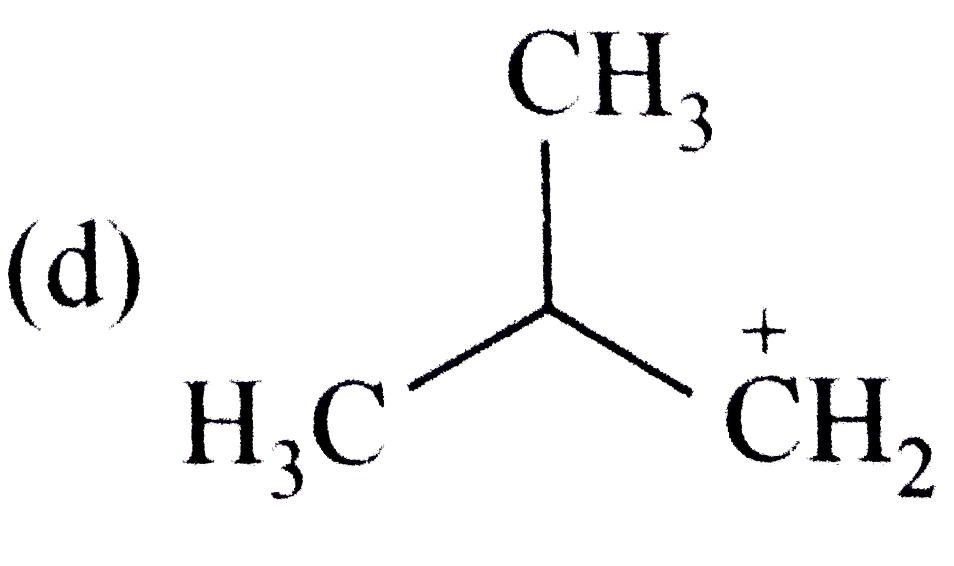Dehydration of 2-butanol yield
1-butene
2-butene
2-butyne
Both (a) and (b)
The correct Answer is:D
To solve the question regarding the dehydration of 2-butanol, we need to understand the process and the products formed during this reaction. Here’s a step-by-step breakdown of the dehydration of 2-butanol:
Step 1: Identify the Structure of 2-butanol
2-butanol is a secondary alcohol with the following structure:
CH3−CH(OH)−CH2−CH3
In this structure, the hydroxyl (-OH) group is attached to the second carbon atom.
Step 2: Understand the Dehydration Process
Dehydration of alcohols involves the elimination of a water molecule (H2O) from the alcohol. This typically occurs under acidic conditions (e.g., using sulfuric acid) and results in the formation of alkenes.
Step 3: Mechanism of Dehydration
The dehydration of 2-butanol can proceed via the following mechanism:
1. Protonation of the hydroxyl group (-OH) to form a better leaving group (water).
2. Loss of water to form a carbocation intermediate.
3. Rearrangement (if applicable) and elimination of a proton to form the alkene.
Step 4: Identify Possible Products
For 2-butanol, the dehydration can lead to two possible alkenes:
1. 1-butene: Formed by elimination of a hydrogen from the adjacent carbon (C1) and the hydroxyl group from C2.
2. 2-butene: Formed by elimination of a hydrogen from C3 and the hydroxyl group from C2.
Step 5: Determine the Major Product
According to Zaitsev's rule, the more substituted alkene is generally the major product. In this case, 2-butene is more stable than 1-butene because it is more substituted (it has two alkyl groups attached to the double bond).
Step 6: Conclusion
The dehydration of 2-butanol yields:
- 1-butene (Hofmann product)
- 2-butene (Zaitsev product)
Thus, both products can be formed, but 2-butene is the major product.
Final Answer:
The dehydration of 2-butanol yields both 1-butene and 2-butene, with 2-butene being the major product.
---
2-butanol is a secondary alcohol with the following structure:
CH3−CH(OH)−CH2−CH3
In this structure, the hydroxyl (-OH) group is attached to the second carbon atom.
Dehydration of alcohols involves the elimination of a water molecule (H2O) from the alcohol. This typically occurs under acidic conditions (e.g., using sulfuric acid) and results in the formation of alkenes.
The dehydration of 2-butanol can proceed via the following mechanism:
1. Protonation of the hydroxyl group (-OH) to form a better leaving group (water).
2. Loss of water to form a carbocation intermediate.
3. Rearrangement (if applicable) and elimination of a proton to form the alkene.
For 2-butanol, the dehydration can lead to two possible alkenes:
1. 1-butene: Formed by elimination of a hydrogen from the adjacent carbon (C1) and the hydroxyl group from C2.
2. 2-butene: Formed by elimination of a hydrogen from C3 and the hydroxyl group from C2.
According to Zaitsev's rule, the more substituted alkene is generally the major product. In this case, 2-butene is more stable than 1-butene because it is more substituted (it has two alkyl groups attached to the double bond).
The dehydration of 2-butanol yields:
- 1-butene (Hofmann product)
- 2-butene (Zaitsev product)
The dehydration of 2-butanol yields both 1-butene and 2-butene, with 2-butene being the major product.
Topper's Solved these Questions
- ALCOHOL, PHENOL AND ETHERBook:ERRORLESS Chapter:ALCOHOL, PHENOL AND ETHERExercise:Ordinary thinking (Ojective questions) Uses of Alcohol, Phenol and Ethers
Explore 20 Videos
- ALCOHOL, PHENOL AND ETHERBook:ERRORLESS Chapter:ALCOHOL, PHENOL AND ETHERExercise:Critical Thinking (Objective Questions)
Explore 17 Videos
- ALCOHOL, PHENOL AND ETHERBook:ERRORLESS Chapter:ALCOHOL, PHENOL AND ETHERExercise:Ordinary thinking (Ojective questions) Preparation of Alcohol, Phenol and Ethers
Explore 46 Videos
- ALDEHYDES AND KETONES Book:ERRORLESS Chapter:ALDEHYDES AND KETONES Exercise:JEE Section (JEE (Advanced) 2018) Numeric answer type question
Explore 1 Video
Similar Questions
Knowledge Check
Dehydration of 1−butanol gives 2−butene as a major product , by which of the following intermediate the compound 2−butene obtained
A B
B C
C D
D
Dehydration of 1-butanol gives 2-butene as a major product, by which of the following intermediate the compound 2-butene is obtained.
A B
B C
C D
D
Dehydration of 1-butanol gives 2-butane as a major product, by which of the following intermediate the compound 2-butene obtained.
A B
B C
C D
D
Write the mechanism of acid dehydration of ethanol of yield ethene. (ii) Write note on Reimer - Tiemann reaction.
View SolutionThe dehydration of 1-butanol gives
View SolutionFormation of 2-butene as major on dehydration of 2-butanol is according to
View SolutionEnergy profile diagram for dehydration of 2-butanol using conc. H2SO4 is given below:

Product (b) of above reaction is:
View SolutionAcid catalysed dehydration of t-butanol is faster than that of n-butanol because
View Solution

